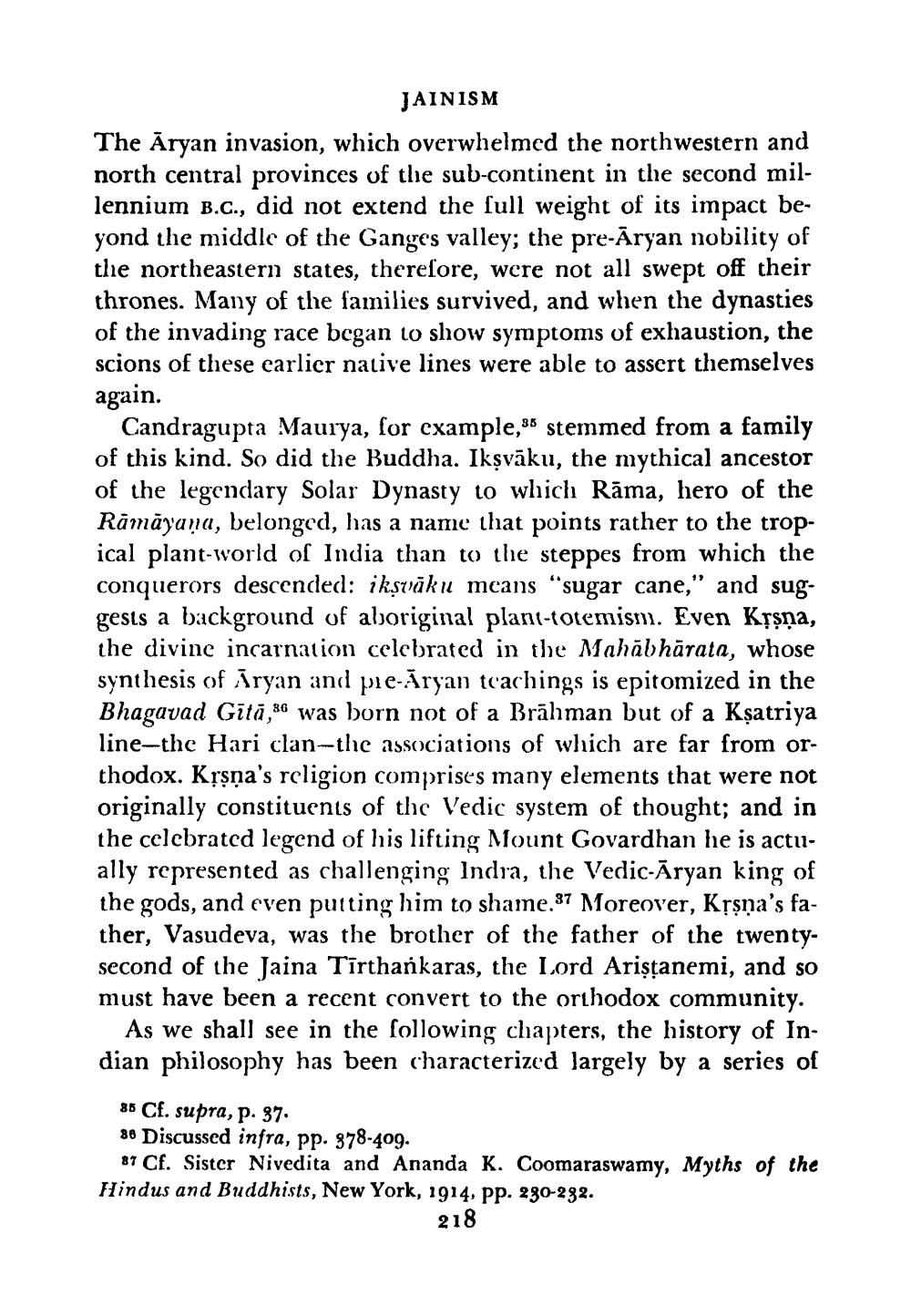________________
JAINISM
The Aryan invasion, which overwhelmed the northwestern and north central provinces of the sub-continent in the second millennium B.C., did not extend the full weight of its impact beyond the middle of the Ganges valley; the pre-Aryan nobility of the northeastern states, therefore, were not all swept off their thrones. Many of the families survived, and when the dynasties of the invading race began to show symptoms of exhaustion, the scions of these earlier native lines were able to assert themselves again.
Candragupta Maurya, for example, stemmed from a family of this kind. So did the Buddha. Ikṣvāku, the mythical ancestor of the legendary Solar Dynasty to which Rama, hero of the Rāmāyaṇa, belonged, has a name that points rather to the tropical plant-world of India than to the steppes from which the conquerors descended: ikṣvāku means "sugar cane,' and suggests a background of aboriginal plant-totemism. Even Kṛṣṇa, the divine incarnation celebrated in the Mahabharata, whose synthesis of Aryan and pie-Aryan teachings is epitomized in the Bhagavad Gita, was born not of a Brahman but of a Ksatriya line-the Hari clan-the associations of which are far from orthodox. Kṛṣṇa's religion comprises many elements that were not originally constituents of the Vedic system of thought; and in the celebrated legend of his lifting Mount Govardhan he is actually represented as challenging Indra, the Vedic-Aryan king of the gods, and even putting him to shame.87 Moreover, Kṛṣṇa's father, Vasudeva, was the brother of the father of the twentysecond of the Jaina Tīrthankaras, the Lord Ariṣṭanemi, and so must have been a recent convert to the orthodox community.
39
As we shall see in the following chapters, the history of Indian philosophy has been characterized largely by a series of
85 Cf. supra, p. 37.
36 Discussed infra, pp. 378-409.
87 Cf. Sister Nivedita and Ananda K. Coomaraswamy, Myths of the Hindus and Buddhists, New York, 1914, pp. 230-232.
218




